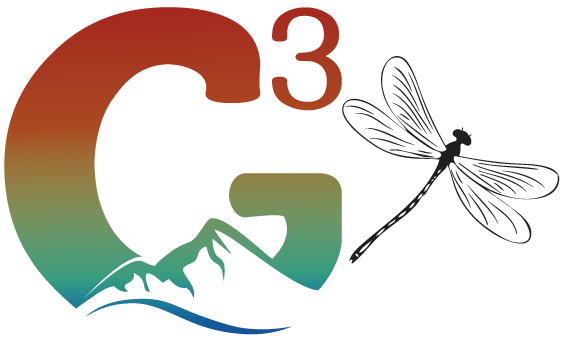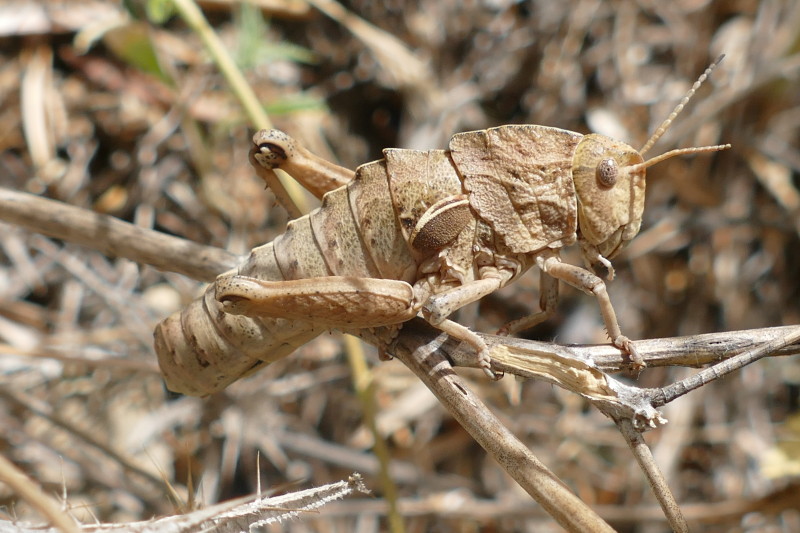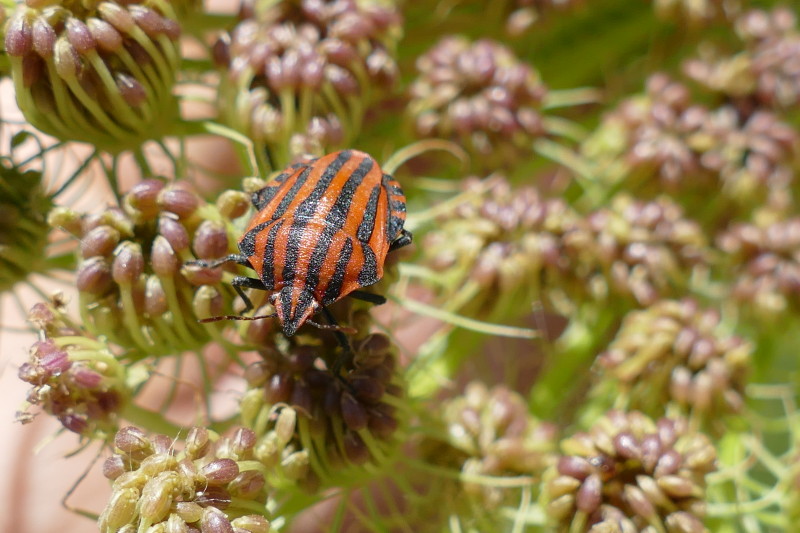Other insects in Andalusia
Biodiversity in its greatest expression – Remarkable and fascinating Iberian species.
Insects are arthropods, that is, invertebrates covered with a cuticle (exoskeleton) and articulated legs. Most insects have three pairs of legs and two pairs of wings, true toolboxes due to their morphologies and adaptations. We recognize 30 orders of insects that are radically different life forms.
With thousands of species, most of them of a few millimeters, their study requires method and patience. We invite you to come and marvel at the beautiful diversity of Mediterranean insects.
Seeing the flight of large daytime neuroptera in the Mediterranean meadows is always a fascinating spectacle. In this area we can easily see the Libelloides baeticus, Nemoptera bipennis or Palpares libelluloides.
Mantis has a remarkable diversity in the European context and are represented by 10 species in the sector. These include the African mantis (Sphodromantis viridis) and the wingless mantis (Apteromantis aptera).
Among the hymenoptera, the great Megascolia maculata is particularly impressive for its size, being one of the largest in Europe.
The region is particularly rich in large terrestrial insects or spectacular colorations beetles such as darkling beetle, scarabs, blister beetles, jewel beetles and longhorn beetles.
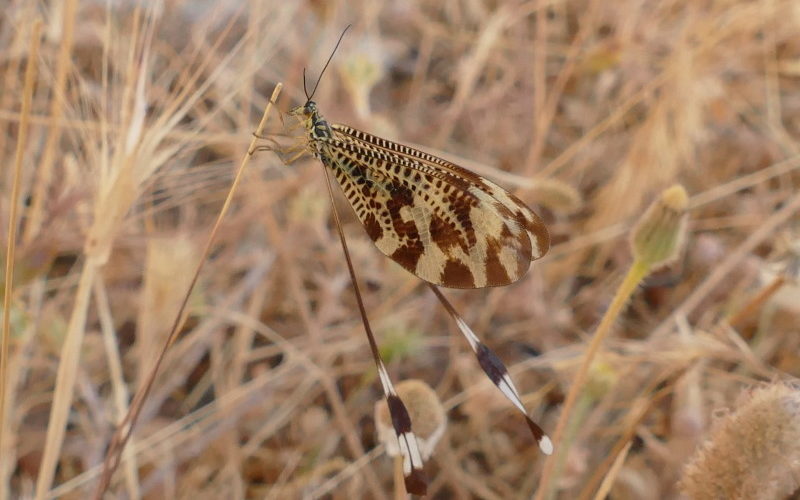
Among insects in Andalusia, Nemoptera bipennis is possibly the most beautiful with a localized distribution in the Iberian Peninsula.
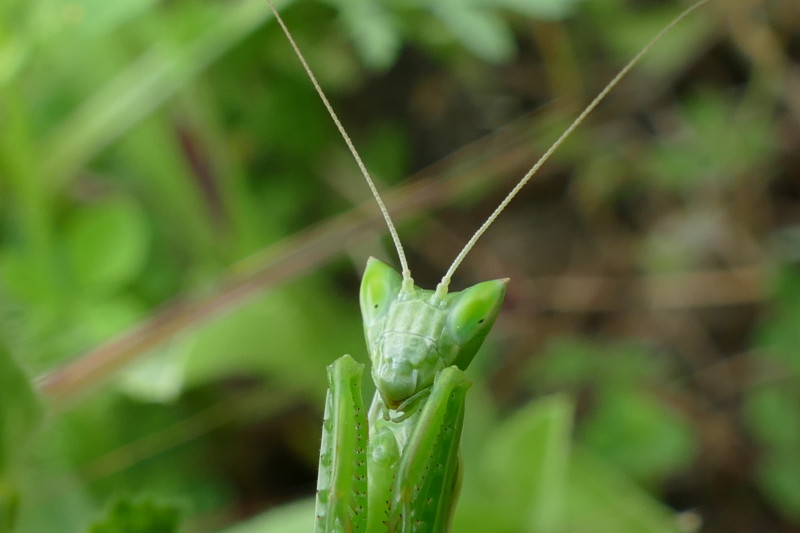
Apteromantis aptera, a curious non-winged mantis with conical eyes! Spring species long considered extremely rare.


The male of the Mediterranean firefly (Nyctophila reichii) is winged and very different in morphology from the female. This one does not emit light.
Nighttime sampling facilitates the detection of individuals of rhinoceros beetle (Oryctes nasicornis), Mediterranean firefly (Nyctophila reichii) and other beetles and lepidoptera attracted by artificial lighting.
The aquatic insects present in the Genal River are varied and with many endemisms. We must mention an extremely rare aquatic insect Aphelocheirus murcius, limited to the last courses of well-preserved rivers in the south of the Iberian Peninsula.
Insects are a vast world, with over 8,000 species inventoried in Andalusia and possibly up to an estimated total of 20,000 species.

Among insects in Andalusia, Nemoptera bipennis is possibly the most beautiful with a localized distribution in the Iberian Peninsula.
Insects are arthropods, that is, invertebrates covered with a cuticle (exoskeleton) and articulated legs. Most insects have three pairs of legs and two pairs of wings, true toolboxes due to their morphologies and adaptations. We recognize 30 orders of insects that are radically different life forms.
With thousands of species, most of them of a few millimeters, their study requires method and patience. We invite you to come and marvel at the beautiful diversity of Mediterranean insects.
Insects are a vast world, with over 8,000 species inventoried in Andalusia and possibly up to an estimated total of 20,000 species.
Seeing the flight of large daytime neuroptera in the Mediterranean meadows is always a fascinating spectacle. In this area we can easily see the Libelloides baeticus, Nemoptera bipennis or Palpares libelluloides.

Apteromantis aptera, a curious non-winged mantis with conical eyes! Spring species long considered extremely rare.
Mantis has a remarkable diversity in the European context and are represented by 10 species in the sector. These include the African mantis (Sphodromantis viridis) and the wingless mantis (Apteromantis aptera).
Among the hymenoptera, the great Megascolia maculata is particularly impressive for its size, being one of the largest in Europe.
The region is particularly rich in large terrestrial insects or spectacular colorations beetles such as darkling beetle, scarabs, blister beetles, jewel beetles and longhorn beetles.

The male of the Mediterranean firefly (Nyctophila reichii) is winged and very different in morphology from the female. This one does not emit light.
Nighttime sampling facilitates the detection of individuals of rhinoceros beetle (Oryctes nasicornis), Mediterranean firefly (Nyctophila reichii) and other beetles and lepidoptera attracted by artificial lighting.
The aquatic insects present in the Genal River are varied and with many endemisms. We must mention an extremely rare aquatic insect Aphelocheirus murcius, limited to the last courses of well-preserved rivers in the south of the Iberian Peninsula.
Primitive wingless insects
Non-winged
- Zygentoma (=Thysanura s.str.)
Ortopteroids (“locusts and relatives”)
Winged insects of progressive development, with cerci and mandibles
- Dermaptera (earwigs) et Zoraptera
- Plecoptera (stone flies)
- Orthoptera (grasshoppers, crickets & bush-crickets)
- Blattodea (cockroaches), Isoptera (termites) & Mantodea (mantises)
- Phasmatodea (stick insects) & Embioptera (webspinners )
Hemipteroids (“bugs and relatives”)
Winged insects with progressive development, without cerci and with transformed mouthparts
- Psocoptera (booklice)
- Thysanoptera (thrips)
- Phthiraptera (lice)
- Hemiptera💧 (bugs, aphids & cicadas)
Holometabolous (“superior”) insects
Winged insects with development by metamorphosis
- Raphidioptera (snake flies), Megaloptera (alder flies)💧💧 & Neuroptera (lacewings, mantidflies, antlions)
- Coleoptera💧 (beetles) & Strepsiptera (twisted-wing insects)
- Diptera💧 ( horse-flies, crane flies, hoverflies, etc), Mecoptera (scorpionflies), Siphonaptera (fleas)
- Lepidoptera (butterflies and moths) & Trichoptera💧💧 (caddisflies)
- Hymenoptera (bees, wasps & ants)
💧💧 Insect orders fundamentally linked to the aquatic environment (aquatic species in larval phase, but terrestrial in adult phase).
💧 Insect orders with a significant number of aquatic species (in the case of beetles and bugs, both the larvae and adults are aquatic).
